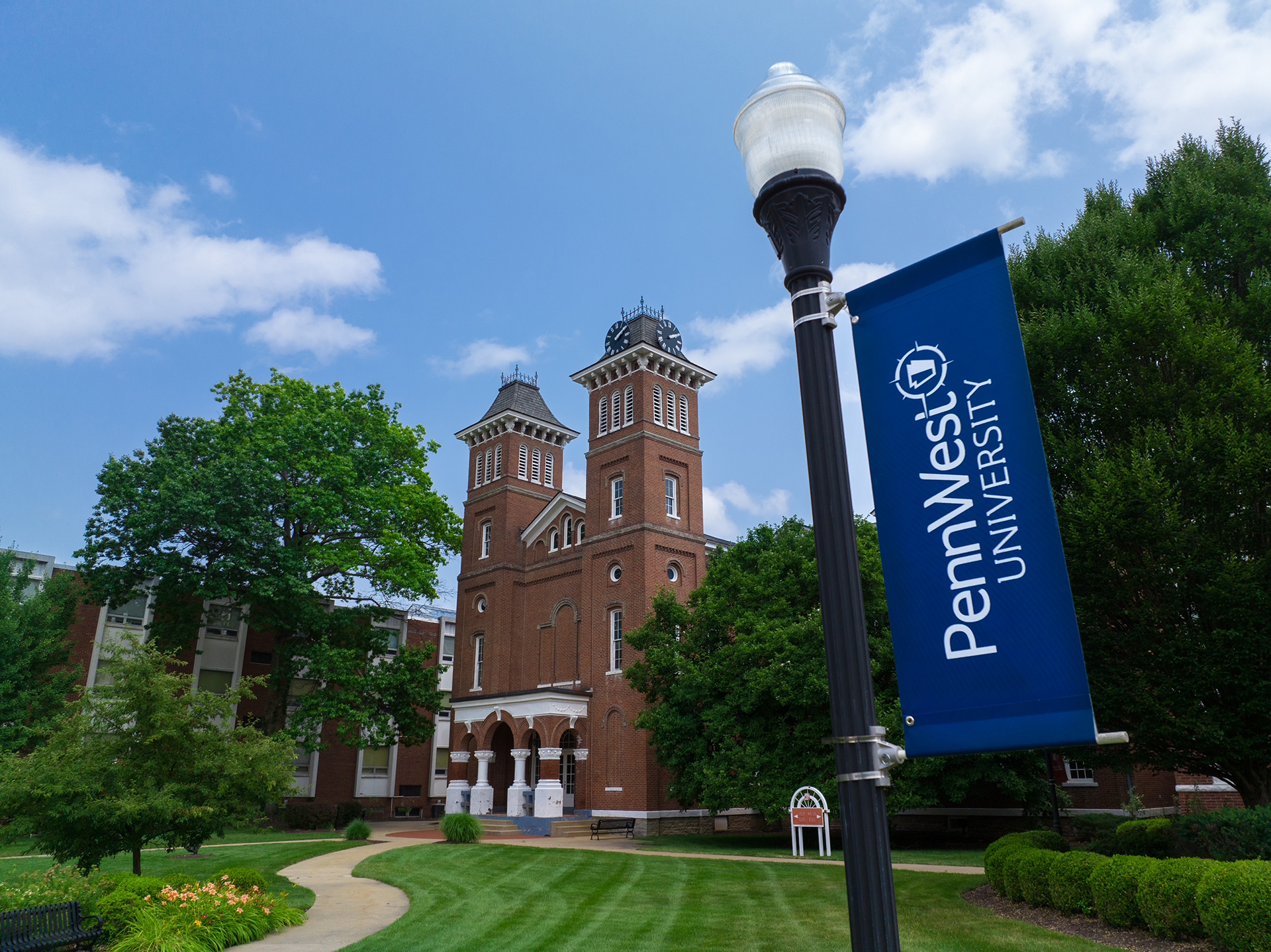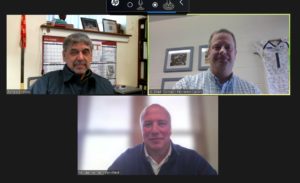Consider the task of combining three universities, all with declining enrollment, into one larger university with three campuses. Daunting? Yes, but also doable. In late 2020, I became involved in such an effort when I was director of facilities management and operations at Clarion University, one of the three universities that officially became Pennsylvania Western University (PennWest) in 2022.
Although the three schools were part of one organization—Pennsylvania’s State System of Higher Education (PASSHE)—they were very much their own entities. Each school had its own staff, including faculty, front-line maintenance workers, and leadership such as presidents and trustees. Each university had its own feel, vibe, and personality as well as unique traditions, athletic rivalries, and folklore. Each had its own education programs, policies, and history. All were PASSHE schools, but they had more differences than similarities.

PennWest California was previously California University of Pennsylvania, founded in 1852. Its 294-acre campus is less than an hour from Pittsburgh.
With an average age of 163 years, California University of Pennsylvania (founded in 1852), Clarion University (1867), and Edinboro University (1857) officially became PennWest on July 1, 2022. An abundance of planning went into integrating the three institutions, but was it enough? Combining the universities and all their departments, both academic and administrative, turned out to be more involved than anyone involved in this effort could have expected.
As we look back at the first year and a half of PennWest’s existence, something that stands out from the integration process is the need to assemble plenty of “rowers” to propel the “boat” that is a challenge of this magnitude. As someone who grew up navigating the water of the Great Lakes region, the nautical metaphor grew in importance to me during the integration and helped to illustrate our approach.
Essentially, we needed people on the boat who wanted to work toward solutions, not row against the current. Those who were not part of the solution would only be part of the problem.
This was especially true given that the integration was being planned as our universities were emerging from the pandemic shutdown. While other organizations sought a “new normal” in the wake of the pandemic, the integration had us looking for a “new normal normal”—that is, the challenges of integration only compounded the ask of getting students and campus activities back to our pre-pandemic state.

PennWest Clarion, formerly Clarion University (founded in 1867), is in a more rural part of northwestern Pennsylvania.
As Clarion’s facilities lead, I was on a committee of four facilities management (FM) staff to review FM functions at each campus. Each location would keep its own facilities staff, including tradespersons, clerical staff, and a director. The committee’s main tasks were to review processes, policies and procedures, contract administration, etc., and to report back to executive leadership regarding recommendations for streamlining efforts. We worked for months gathering information, establishing workflows, and trying to become more efficient by creating similar processes for all three campuses.
Across the three campuses, many employees feared that integration meant that one or two of the campuses would close and people would lose their jobs. Morale was low and getting lower, people were stressed, and the light at the end of the tunnel felt to many like a train coming at them. At various times, the rumors and uncertainty cast shadows of doubt on the possibility of success for PennWest.

PennWest Edinboro (founded in 1857 as Edinboro University) is about 20 miles from the city of Erie and the northernmost PennWest campus.
The hovering uncertainty caused many FM workers to leave their jobs. Filling these positions continues to be trying as we seek administrative approvals and frequently attract no applicants for open positions. This difficulty has added to the stress felt across campuses.
If I had had a crystal ball back in 2020, what are the things I wish I had seen from an FM viewpoint, and what would my advice be today to other institutions considering mergers?
 Assemble your rowers
Assemble your rowers
If I had known in late fall of 2020 what I know now, I would have advocated to include more people from FM in gathering information. I would have made sure that everyone who wanted to be a part of the integration process—and was committed to be part of the solution—was involved. We would have held focus groups with the FM trade supervisors and tradespersons to gain better understanding of how each campus’s facilities department operated and the processes they followed, and to better share the overall vision. We learned that it is not enough to occasionally ask a few people a couple of questions; if workers are not involved in the process, morale will fall.
 Ship to shore: Communicate thoroughly
Ship to shore: Communicate thoroughly
As I reflect on how I could have brought more rowers on board earlier in the process, another missing ingredient that stands out is better communication. At the time, I believed I was providing adequate information to the FM team, but is “adequate” enough? I would have sent out a weekly email to the facilities staff sharing any updates—or even to let them know there were no updates. I believe that if the staff had known that they could expect this level of communication on a regular frequency, there would have been a better sense of inclusion in the process.

The facilities directors of the three PennWest campuses on a video call in February. Clockwise from top left: Ron Lincoski, PennWest California; Chad Thomas, PennWest Clarion; Mike Hannah, PennWest Edinboro.
In addition, I would have actively sought input through face-to-face meetings with facilities staff through optional, informal meetings every couple of weeks. I would have asked for more one-on-one meetings with team leaders. I would have paid better attention to what was being communicated to me from the FM team, both verbally and nonverbally, regarding everything from missed work to negative comments and body language. On many occasions, I should have checked in with team members and let them know how much they were appreciated, such as when they were asked to change a campus-specific process to better align with another campus. Looking back, I also realize that the level of the unknown was so elevated that it was easy to misinterpret situations and communication. Having the FM staff at one campus alter how they perform a task could easily lead someone to believe their existing process is the “wrong way,” thus further lowering morale.
 Swab the deck: Visit (and study) the campuses
Swab the deck: Visit (and study) the campuses
Getting to know each of the campuses and the stakeholders on a deeper level would have resolved some of these unknowns. I recommend that campus visits be performed not only by FM management, but also by line-level supervisors. One or two visits are not enough. I am convinced that if the trades supervisors had spent a few days at each campus and worked alongside the corresponding supervisors, they would have gained valuable information.
This practice could have also addressed what I feel is the common problem of insufficiently valuing front-line workers on campus settings. A director’s campus visit cannot provide information equivalent to what a working supervisor can gain by getting his or her hands dirty at the other campuses, seeing procedures in action, and exchanging best practices. Such visits could also help to develop standard operation procedures (SOPs) that can be adopted at every campus involved in an integration. SOPs are essential to enabling multiple campuses to operate consistently, and, in turn, to increase efficiency compared to the informal and unwritten procedures many campuses rely on. If a process is not documented, it cannot be sustained.
Moreover, more campus visits would have produced suggestions to improve efficiency that should be incorporated into the SOPs.
In short, if FM leaders and campus administrators truly value staff and want to encourage them to be a part of the solution, we need to listen and act—to be both proactive and reactive. FM staff need to see that we are looking to grow. This also means working together to review procedures annually and make needed adjustments. If we simply wait for staff to come forward with suggestions, many will not.
 Set your course, and batten down the hatches
Set your course, and batten down the hatches
Integration is not a straightforward process. Every university—regardless of its size, location, or focus—has a culture that has been developed over decades or maybe even centuries. Blending multiple universities into one with several campuses requires work by every stakeholder, including those within the facilities divisions. There will be stress, uncertainty, and highs and lows of morale.
In any such situation, the institutions’ FM leadership teams (and all campus leadership) can motivate employees to be “rowers” by seeking input, communicating more thoroughly, and getting their hands dirty by spending time on every campus and consolidating procedures. Things will get clearer, communication will get better, and stronger teams will form.
G. Chad Thomas is director of facilities management and operations at PennWest University-Clarion. He has been with PennWest for 24 years, almost all of them at the former Clarion University, where he received his bachelor’s degree. He has held various roles with the university, including resident director, area coordinator, facilities coordinator, director of auxiliary operations, and director of facilities management and operations. He can be reached at [email protected].



